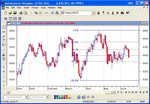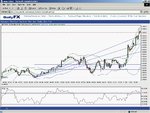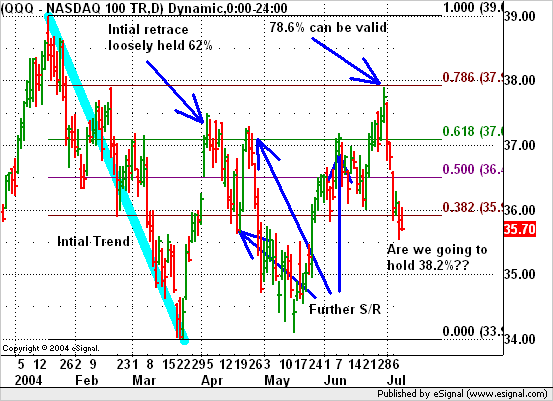JTrader
Guest
- Messages
- 5,741
- Likes
- 507
Hello
i'd just like to check that I've got the right understanding of how Finonacci is used and interpreted on a chart.
"Fibonacci Levels indicate possible support and resistance levels from important highs and lows. A start and end point are necessary to draw Fibonacci Levels on a chart. All of the levels can be customized and changed to your desired levels. The distance between the start and end points is divided into Fibonacci Levels which suggest possible support and resistance points. To draw Fibonacci Levels on a chart move the cursor on the chart to the starting point. The starting point is generally an important high or low on the chart. Then drag the mouse to the ending point. The ending point is usually the end of an important trend or correction following the starting point. Watch for the completion of a trend or correction at the Fibonacci Levels."
Therefore, will a fibonacci line drawn from a high, to a following low, indicate through it's various fib levels the possible retracement levels from the low point?
And would a fibonacci line drawn from a low to a following high, indicate through it's various fib levels the possible retracement levels from the high point?
There seems to be a conflict between what the text book says and what the charting application that I use does. In the text book fib levels appear as starting at 1.000 - .786 - .618 - .382.....However, my charting application (http://quote.fxtrek.com/misc/fxcm.asp) draws them in order of 38.2% - 50.0% - 61.8%. Which way round shoud they be?
Many thanks
jtrader
i'd just like to check that I've got the right understanding of how Finonacci is used and interpreted on a chart.
"Fibonacci Levels indicate possible support and resistance levels from important highs and lows. A start and end point are necessary to draw Fibonacci Levels on a chart. All of the levels can be customized and changed to your desired levels. The distance between the start and end points is divided into Fibonacci Levels which suggest possible support and resistance points. To draw Fibonacci Levels on a chart move the cursor on the chart to the starting point. The starting point is generally an important high or low on the chart. Then drag the mouse to the ending point. The ending point is usually the end of an important trend or correction following the starting point. Watch for the completion of a trend or correction at the Fibonacci Levels."
Therefore, will a fibonacci line drawn from a high, to a following low, indicate through it's various fib levels the possible retracement levels from the low point?
And would a fibonacci line drawn from a low to a following high, indicate through it's various fib levels the possible retracement levels from the high point?
There seems to be a conflict between what the text book says and what the charting application that I use does. In the text book fib levels appear as starting at 1.000 - .786 - .618 - .382.....However, my charting application (http://quote.fxtrek.com/misc/fxcm.asp) draws them in order of 38.2% - 50.0% - 61.8%. Which way round shoud they be?
Many thanks
jtrader




